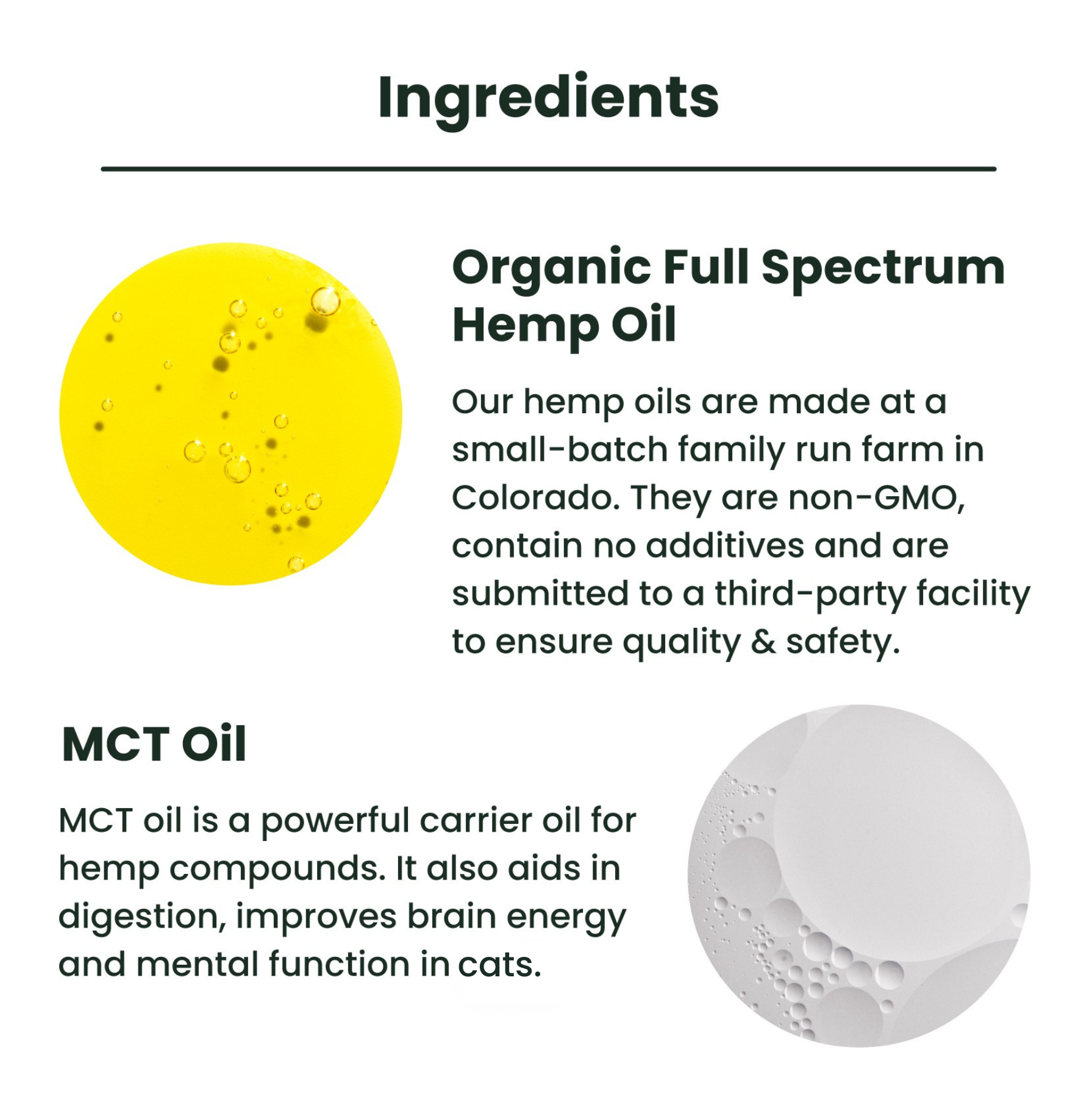When your cat starts throwing up, it’s a signal that something might be amiss. Healthy cats generally don’t have this problem. So when they do, it's like their body’s way of sending out a distress signal, urging us to take a closer look.
In this guide, we’ll dive into why cat vomiting happens, what it might mean, and how you can ensure your cat gets the care they need to return to their usual, carefree selves.
- Acute vs. Chronic Vomiting in Cats
- Is My Cat Vomiting, Regurgitating, or Coughing?
- When is Vomiting Normal for Cats?
- What Does Your Cat’s Vomit Look Like?
- Common Causes of Cat Vomiting
- Treatment Options for Vomiting in Cats
- Final Words About Vomiting Cats
- Frequently Asked Questions About Cat Vomiting
Acute vs. Chronic Vomiting in Cats
When it comes to your cat’s vomiting, you can separate throwing up into two general types: acute and chronic vomiting. Distinguishing between acute and chronic can be crucial for addressing the issue correctly.
- Acute vomiting: Occurs suddenly and is often a one-time event. It might be triggered by something your cat ate—like a bad mouse or an unusual food—or by a temporary issue like hairballs or mild stomach upset.
- Chronic vomiting: A recurring issue defined as vomiting three times per month for three or more months. If your cat is vomiting regularly—more than once a week or even daily—it could indicate a more serious underlying problem, such as chronic gastrointestinal issues, liver disease, or even cancer.
Is My Cat Vomiting, Regurgitating, or Coughing?
When your cat spits up something, it can be hard to tell if they’re vomiting, regurgitating, or just coughing. Understanding the difference is key to figuring out if it’s something to worry about.
- Vomiting: An active process where stomach muscles contract, forcing the contents of the stomach or upper intestines up and out. It’s often preceded by signs like drooling, lip licking, or heaving.
- Regurgitation: A passive process that happens quickly and without warning, usually right after eating. The regurgitated food isn’t digested and may still be in tube-like shapes.
- Coughing: Sometimes mistaken for vomiting. When cats cough, they may make gagging noises or even bring up a bit of foam, but it’s not the same as vomiting.
When is Vomiting Normal for Cats?
Vomiting in cats can be normal—yes, you read that right!
Cats, particularly those that groom a lot, may vomit occasionally to rid their stomachs of hairballs. This is their way of clearing the digestive tract.
An occasional episode of vomiting after eating too quickly, nibbling on grass, or getting too playful right after a meal is usually not a cause for concern. However, frequent or chronic vomiting, especially when it’s coupled with other symptoms like lethargy, weight loss, or diarrhea, can signal a more serious issue.
What Does Your Cat’s Vomit Look Like?
Understanding the appearance of your cat’s vomit can provide valuable clues about what might be causing the issue.
- Bile (Yellow Liquid): Indicates an empty stomach, with bile irritating the stomach lining.
- White Foam: Could indicate irritation from prolonged vomiting, hairballs, or indigestion.
- Worms: Usually point to a parasitic infection and require immediate veterinary attention.
- Blood: Fresh red blood suggests ulcers or trauma, while dark brown (coffee ground appearance) suggests internal bleeding.
- Clear Liquid: May indicate excessive water consumption, stomach irritation, or empty stomach vomiting.
- Food: Vomiting undigested food could mean your cat ate too quickly or has a digestive issue.
- Black Liquid: Suggests internal bleeding and requires immediate veterinary care.
- Hairballs: Normal if occurring once or twice per month but should be monitored if frequent.
Common Causes of Cat Vomiting
- Hairballs: Formed from grooming and can lead to vomiting when too large.
- Dietary Issues: Food allergies, overeating, or eating too quickly can upset a cat’s stomach.
- Ingesting Foreign Objects: Swallowing toys, string, or plastic can cause blockages or irritation.
- Toxins: Household chemicals, plants, or toxic foods can cause vomiting.
- Inflammatory Bowel Disease: A chronic condition causing vomiting, diarrhea, and weight loss.
- Pancreatitis: Inflammation of the pancreas leading to severe vomiting and abdominal pain.
- Cancer: Tumors in the digestive system can cause vomiting.
- Hyperthyroidism: An overactive thyroid gland causing vomiting and other metabolic issues.
- Medications: Some antibiotics, anti-inflammatory drugs, or chemotherapy medications can trigger vomiting.
- Kidney Disease: Impaired kidney function leads to nausea and vomiting.
- Diabetes: Uncontrolled diabetes can lead to gastrointestinal upset.
- Constipation: Abdominal discomfort from being unable to pass stool can cause vomiting.
- Liver Disease: Impaired liver function can lead to vomiting.
- Intestinal Parasites: Worms and parasites can cause digestive distress.
- Bacterial or Viral Infection: Infections can inflame the stomach lining and cause vomiting.
Treatment Options for Vomiting in Cats
- Dietary Adjustments: Switching to a bland or hypoallergenic diet to soothe the stomach.
- Medications: Anti-emetic medications like Cerenia may help control vomiting.
- Preventative Measures: Monitor what your cat eats, provide fresh water, and prevent access to toxic substances.
Final Words About Vomiting Cats
Dealing with a vomiting cat can be worrying, but understanding the potential causes and diagnostic steps can help you navigate the situation more confidently. From hairballs to serious conditions like kidney disease or cancer, a variety of factors can contribute to your feline friend’s upset stomach.
Recognizing the signs and knowing when to seek veterinary help is crucial in ensuring your cat’s health. Stay vigilant, proactive, and give your cat the best chance for a quick recovery.
Frequently Asked Questions About Cat Vomiting
What are common reasons cats vomit?
Cats may vomit due to hairballs, dietary issues, eating too quickly, infections, parasites, liver disease, kidney disease, toxins, or gastrointestinal conditions such as inflammatory bowel disease.
When is vomiting considered normal for cats?
Occasional vomiting from hairballs, eating too fast, or mild stomach upset can be normal. Frequent or chronic vomiting suggests a more serious problem.
What should I look for in my cat’s vomit?
The appearance may reveal important clues: yellow bile, white foam, undigested food, blood, worms, or hairballs can each indicate different causes.
When should I bring my cat to the vet for vomiting?
Seek veterinary care if vomiting becomes frequent, contains blood, is accompanied by lethargy or weight loss, or persists for more than 24 hours.
How can I help treat my cat’s vomiting at home?
Home options include feeding bland food, preventing access to toxins, monitoring diet, and using prescribed medications like Cerenia under veterinary guidance.
What’s the difference between vomiting and regurgitation in cats?
Vomiting is active and involves abdominal contractions, while regurgitation is passive and usually occurs soon after eating without warning.









